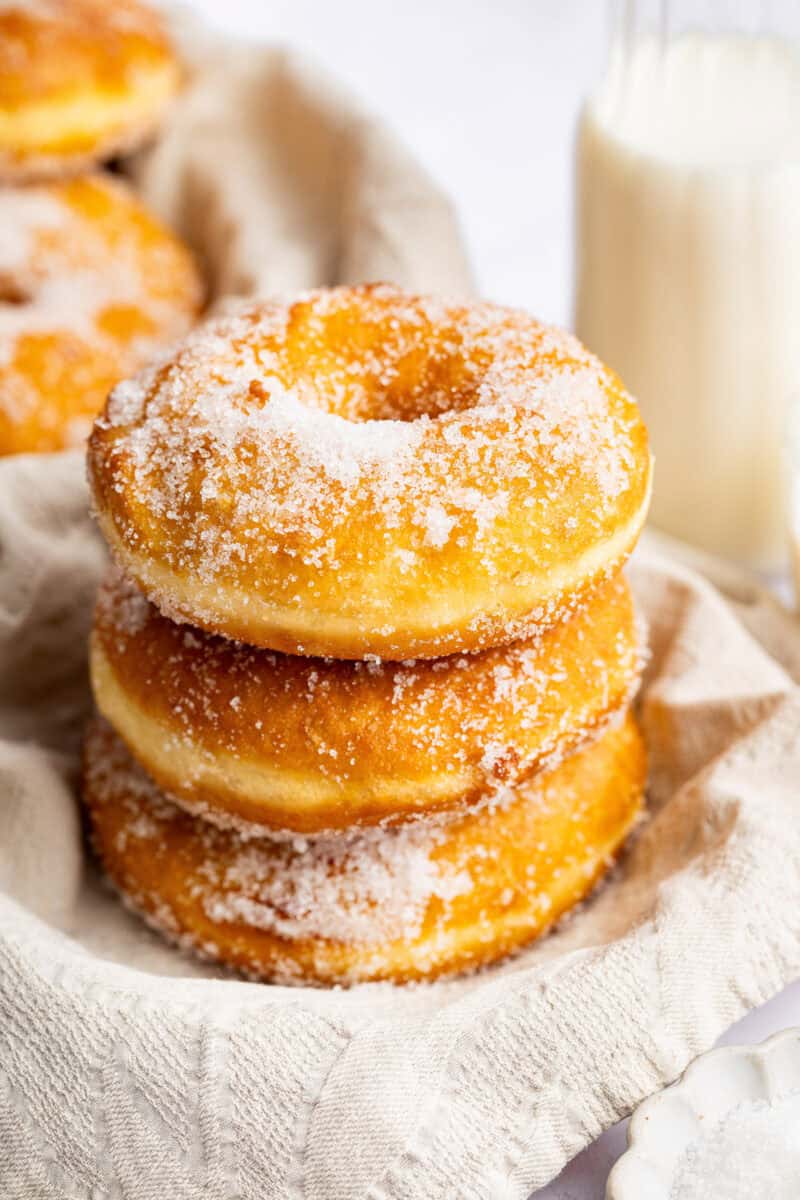Neapolitan Potato Donuts (Graffe/Carnival Doughnuts)
This post may contain affiliate links. For more information, please see our disclosure policy.
Neapolitan Graffe are pillowy-soft potato doughnut rings rolled in sugar, bringing the taste of Italian carnival to your kitchen.
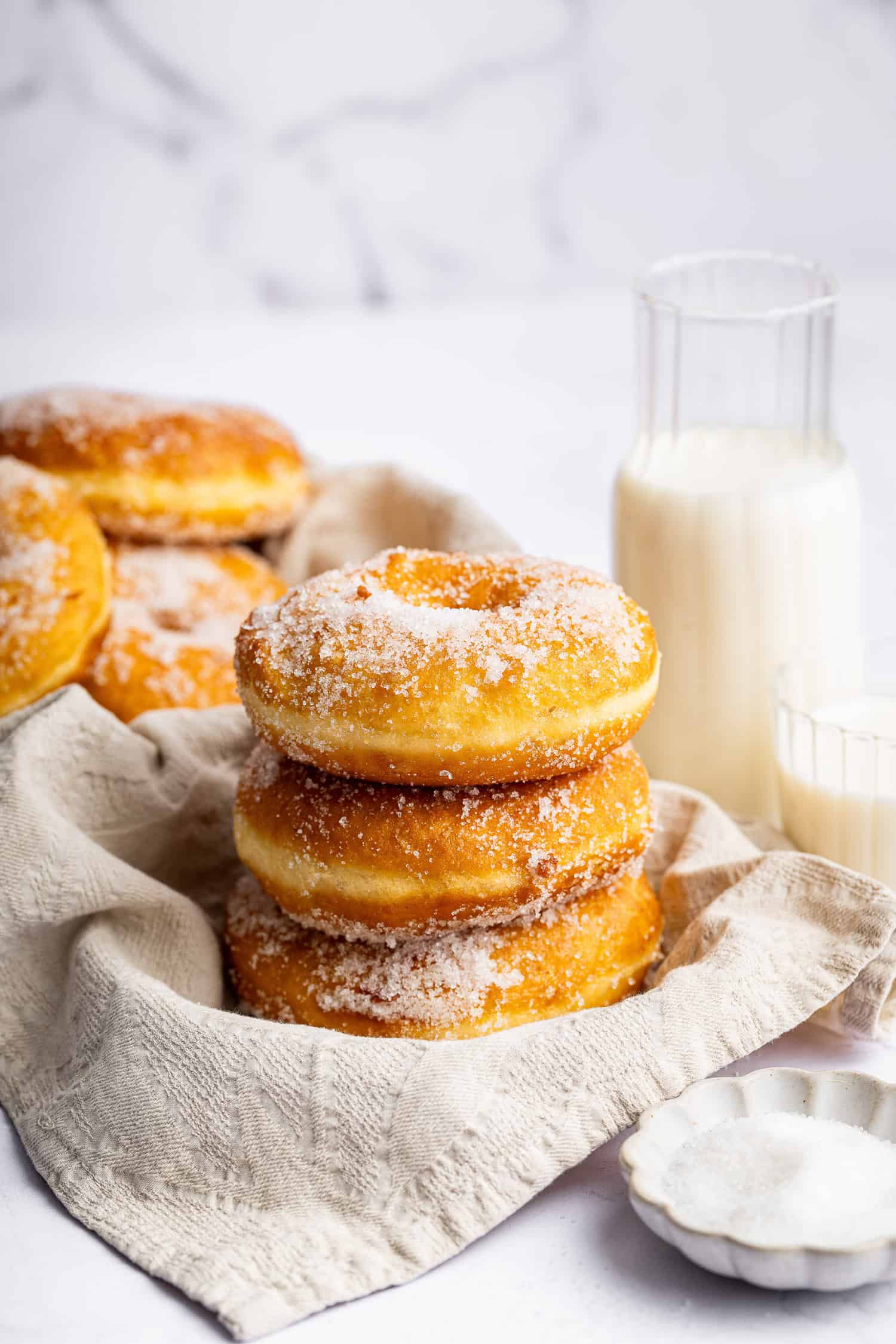
In Italy, the weeks leading up to Lent transform into a carnival of fried sweets, each with its own story. These potato doughnuts (graffe), unlike their filled ancestors (bomboloni and zeppole/sfingi), are lighter, shaped into rings, and enriched with potato for a very tender crumb.
While you might find them elsewhere during carnival season, in Naples they’re a year-round treat, perfuming the streets with their distinctive aroma and coating fingers everywhere in sparkly sugar. Though my kitchen might not be near Naples, making graffe brings that festive Italian spirit closer to home ♥️.
Why Make This
- A very tender crumb from the potato ingredient
- Very pillowy interior with a delicate, sparkly sugar crust
- Authentic taste of Italian donuts
- Best eaten still warm when they practically melt in your mouth
Ingredient Notes
- Starchy Potatoes: Russets or other starchy potatoes are essential here – their high starch content creates the signature tender, light texture that defines graffe. Don’t substitute waxy potatoes as they’ll make the doughnuts gummy.
- Bread Flour: The higher protein content helps create the right structure to support the enriched dough. While all-purpose flour can technically work, the texture won’t be quite the same.
- Instant Yeast: Use instant (rapid-rise) yeast for reliable, consistent results. It can be mixed directly into the dry ingredients without proofing. If using active dry yeast instead, proof it in warm liquid first and expect a slightly longer rise time.
- Frying Oil: Peanut oil is traditional and ideal due to its high smoke point and neutral flavor. Other neutral oils with high smoke points like canola or vegetable oil are acceptable alternatives.
- Sugar: Regular granulated sugar works for both the dough and the coating. Some bakers prefer superfine sugar for the coating as it adheres better. I also include glaze instructions for those who want a more American donut.
- Salt: Helps with developing flavor and controlling yeast growth.
A full list of ingredients and measurements appears in the recipe card below.
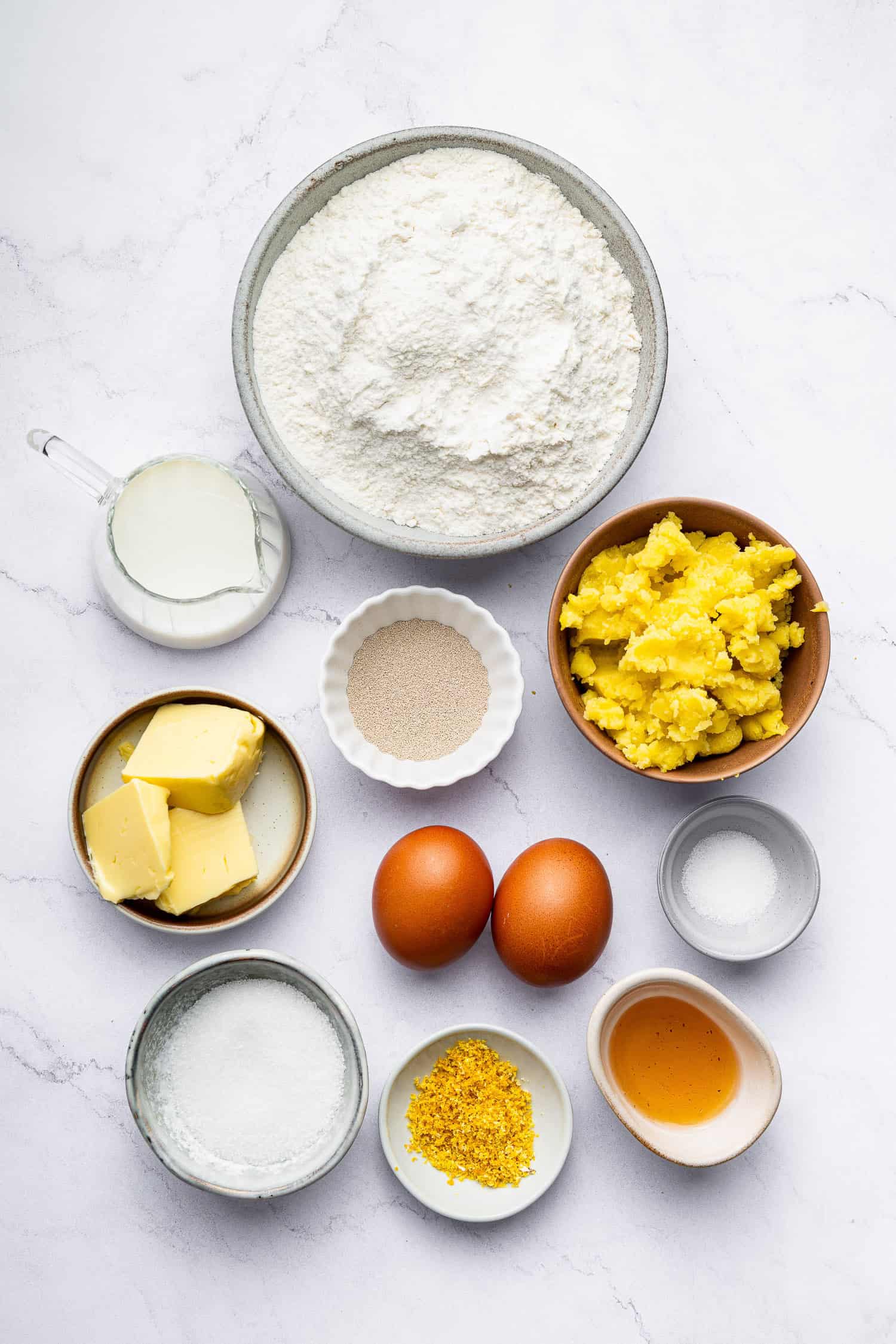
Methods Overview
Total time: ~4 hours (mostly rising time). Best enjoyed the same day!
Prepare two components:
- Cook whole potatoes with skins until tender, peel, mash until smooth, cool
- Make pre-dough (pre-ferment) with flour, milk, and yeast; rest 1 hour
Make main dough:
- Combine pre-dough, eggs, cooled mashed potato, flour, butter, honey, sugar, and lemon zest in stand mixer
First rise and then shape the doughnuts:
- Let dough rise for 30 minutes
- Divide dough into 12 equal portions and shape into balls
- After brief rest, form each ball into a ring with oiled hands
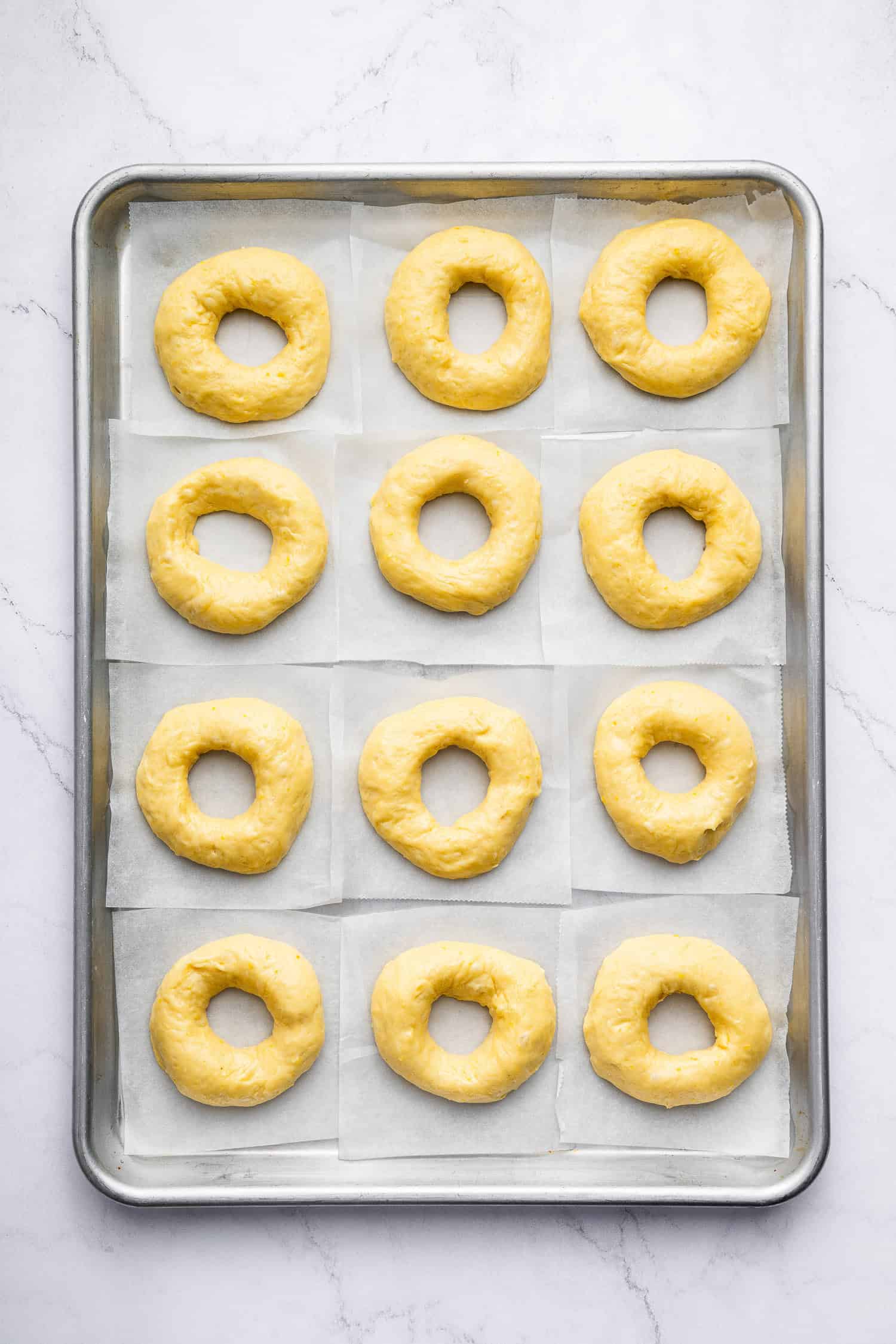
Final rise, then fry and finish:
- Let shaped doughnuts rise for 1 hour until properly proofed
- Fry at 340°F until golden brown on both sides
- Immediately roll in sugar while still warm
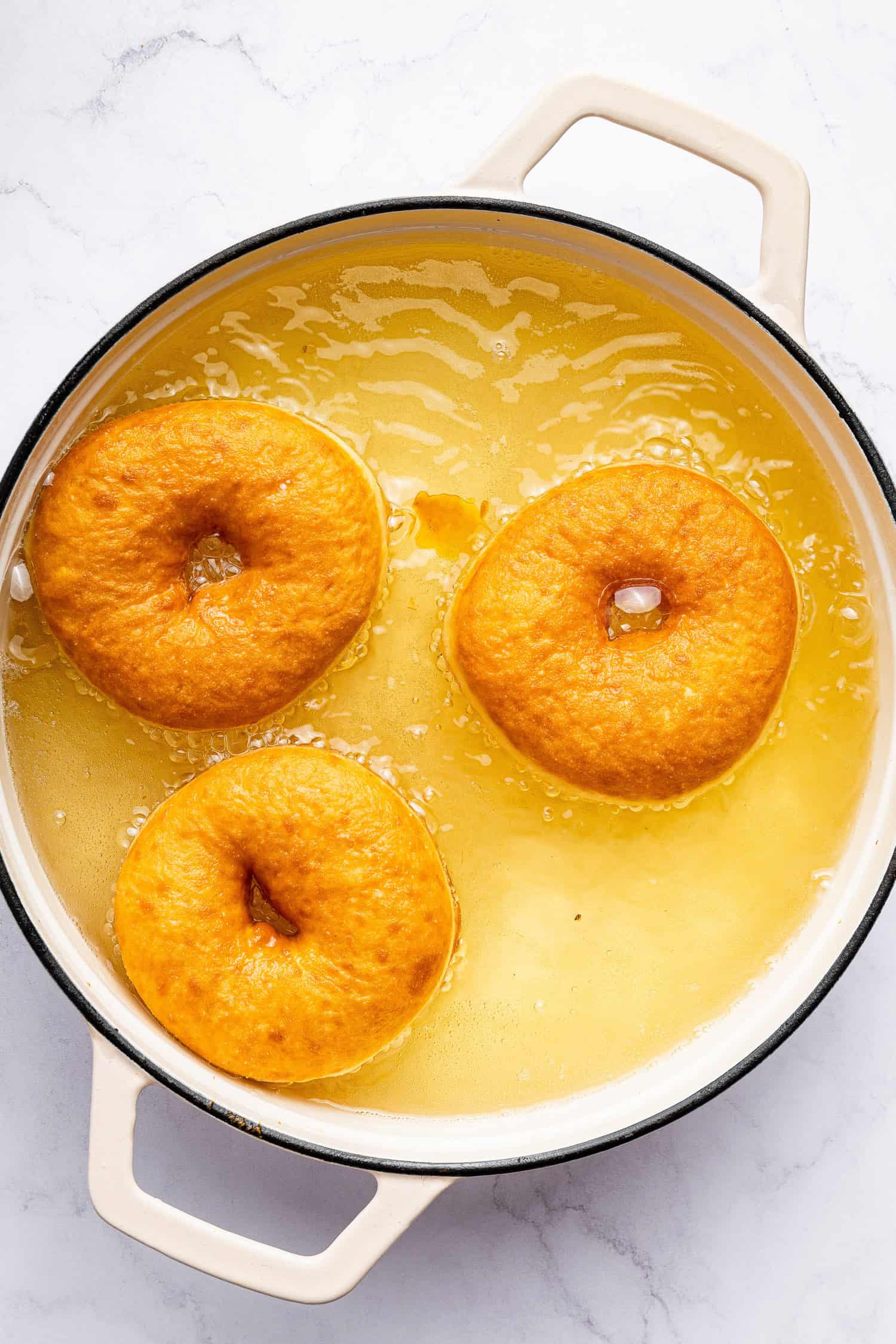
Tips & Techniques
- Mash potatoes until smooth before using
- Cool mashed potatoes to room temperature before mixing
- Oil your hands when shaping to prevent sticking
- Use parchment squares to transfer proofed doughnuts (optional)
- Verify proofing with poke test – dough should slowly spring back
- Proof shaped donuts well – a nice puffy donut will be light and airy after frying!
- Maintain oil at 340°F – test with small dough piece for gentle bubbling
- Fry 2-3 doughnuts at a time, letting oil reheat between batches
- Roll in sugar while still warm for best coating
- Store in airtight container and eat within 24 hours
- Rise dough in warm spot (75-80°F) – oven with light on works well
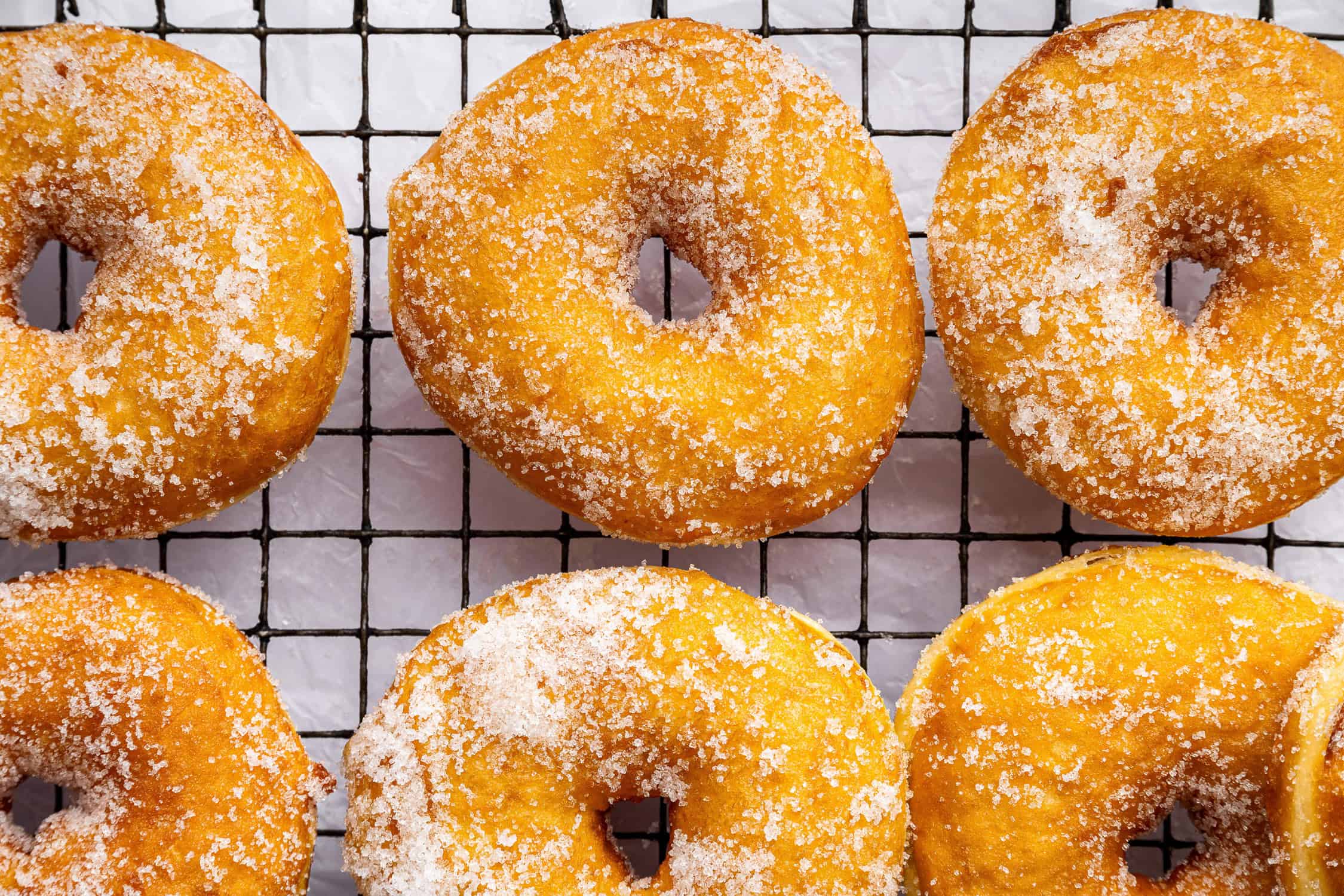
♥️ Loved this recipe? I’d be thrilled if you’d rate it ⭐️ and share your experience in the comments below! Your ratings and comments help other readers discover this recipe and keep this blog going. Did you add any special tweaks? Our community of home cooks would love to hear about it! ♥️
📖 Recipe

Italian Potato Donuts (Neapolitan Carnivale Graffe)
Equipment
- Stand mixer
- Thermometer and heavy bottom pot
- Deep fryer optional
Ingredients
Pre-dough:
- 75 g (10 tbsp) bread or all-purpose flour
- 80 g (5 tbsp) whole milk
- 1 g (1/4 tsp) dry yeast
Main dough:
- first dough (all from first step)
- 250 g (2 cups) bread flour
- 3 g (1 tsp) dry yeast
- 160 g (5.6 oz) russet potatoes boiled, mashed (one medium-large Russet)
- 2 large eggs room temperature
- 30 g (2.5 tbsp) sugar
- 55 g (4 tbsp) unsalted butter room temperature
- 10 g (0.5 tbsp) honey
- 1 large lemon zest only (or use vanilla extract instead for a more classic American version)
- 5 g (3/4 tsp) salt
To Fry and Coat
- 1.5 liters peanut oil other frying oils: avocado or canola
- Sugar as needed for coating the donuts
Instructions
Cook the Potatoes
- Boil whole potato with the skin on in salted water until fork-tender, about 20-25 minutes
- Let cool, peel, and mash until perfectly smooth – this smoothness is crucial for the dough texture
- Set aside to cool fully to room temperature before using in the dough
Make the First Dough
- Mix the flour, yeast, and whole milk in a small bowl until combined
- Cover with plastic wrap and rest in a turned-off oven with light on for 1 hour (this creates an ideal warm environment of 75-80°F for rising)
Make the Main Dough
- In a stand mixer fitted with a dough hook, combine the dough mixture from the first step along with the two beaten eggs
- Add the room temperature mashed potato, the bread flour, yeast, sugar, honey, and lemon zest
- Mix, then gradually add the room-temperature butter and salt until the dough is smooth and elastic. The dough may become very soft and loose after the butter has been added but with additional mixing, it will come back together
- Shape the dough into a ball, place it in an oiled bowl, cover it, and let it rise in a turned-off oven with light for 30 minutes
Shape the Donuts and Final Rise
- Divide dough into 12 portions (60-65g each) on a floured surface and shape into balls. Rest for 10 minutes
- With lightly oiled hands (this prevents sticking), make a hole in the center of each ball and gently shape them into donut shapes
- Place the donuts on parchment-lined sheet, using individual parchment squares under each donut for easier transfer
- Allow them to rise for at least 1 hour in a turned-off oven. The key to these donuts is to raise them well
- Verify proper proofing using the poke test – the dough should slowly spring back when poked
Frying & Finishing
- Heat the oil to 340°F (170°C) in a deep pan or a deep fryer. Test temperature by dropping a small piece of dough – it should bubble gently
- Carefully transfer 2 to 3 donuts to the oil (using the parchment squares) and fry for 1 to 2 minutes until golden on both sides
- Let oil return to proper temperature between batches
- If they are not fried enough at the correct temperature, they might be raw inside, so maintaining the proper temperature is important
- Immediately roll the hot donuts in sugar to coat while still warm for best adhesion. Alternatively, you can use powdered sugar or a donut glaze – these break the tradition of these donuts but would still be delicious.
- Instead of sugaring, you can glaze these donuts (although this is not traditional in Italy) – see Notes for suggestions.
Storage
- Graffe are best enjoyed fresh but can be stored in an airtight container at room temperature for up to 24 hours. The sugar coating may become sticky over time.
- Freezing is not recommended as it can compromise their delicate, potato-enriched texture.
Make Ahead
- Mashed potatoes can be made and refrigerated up to 24 hours ahead
- After shaping, doughnuts can be refrigerated overnight for their final rise – bring to room temperature for 30 minutes before frying
Notes
Home Baker’s Donut Glaze:
- 3.5 oz (about 7 tablespoons) milk
- 1 pound powdered sugar (about 4 cups)
- 1/2 teaspoon vanilla extract
- Pinch of salt (about 1/8 teaspoon)
- 2 tablespoons melted butter
- Combine milk, vanilla, and melted butter
- Gradually whisk in powdered sugar and salt until smooth
- Warm the glaze to 100-110°F using either a double boiler (place bowl over barely simmering water) or a microwave (heat in 10-15 second bursts, stirring between each)
- Keep warm while glazing (using low heat on double boiler)
Temperature Guide:
- For a shiny, translucent finish, Use hot donuts + hot glaze
- For opaque, more traditional look: Use cold donuts + hot glaze
- Avoid using cold glaze – it won’t set properly
Pro Tips:
- Stir occasionally while keeping warm to prevent skin from forming
- If glaze gets too thick, thin with a little warm milk
- Let excess glaze drip off for about 30 seconds before placing on the rack

